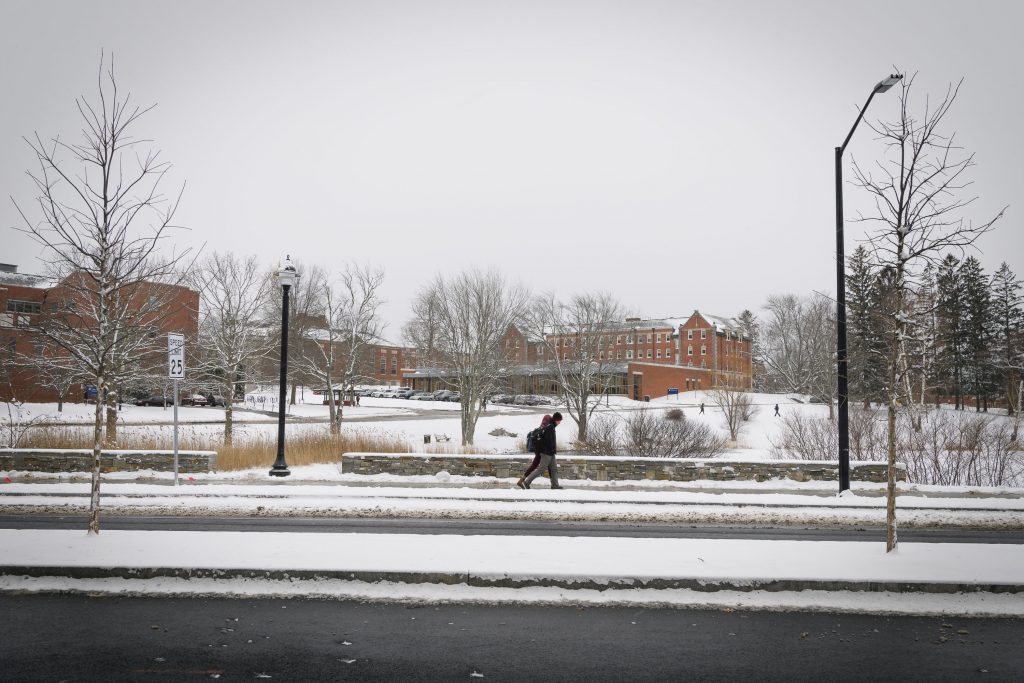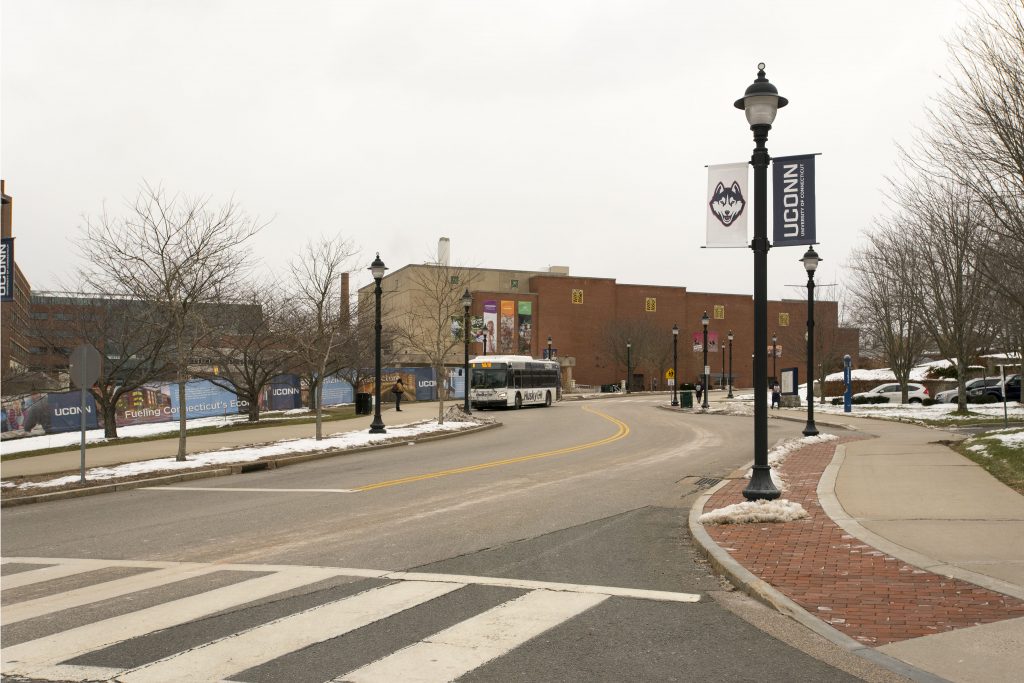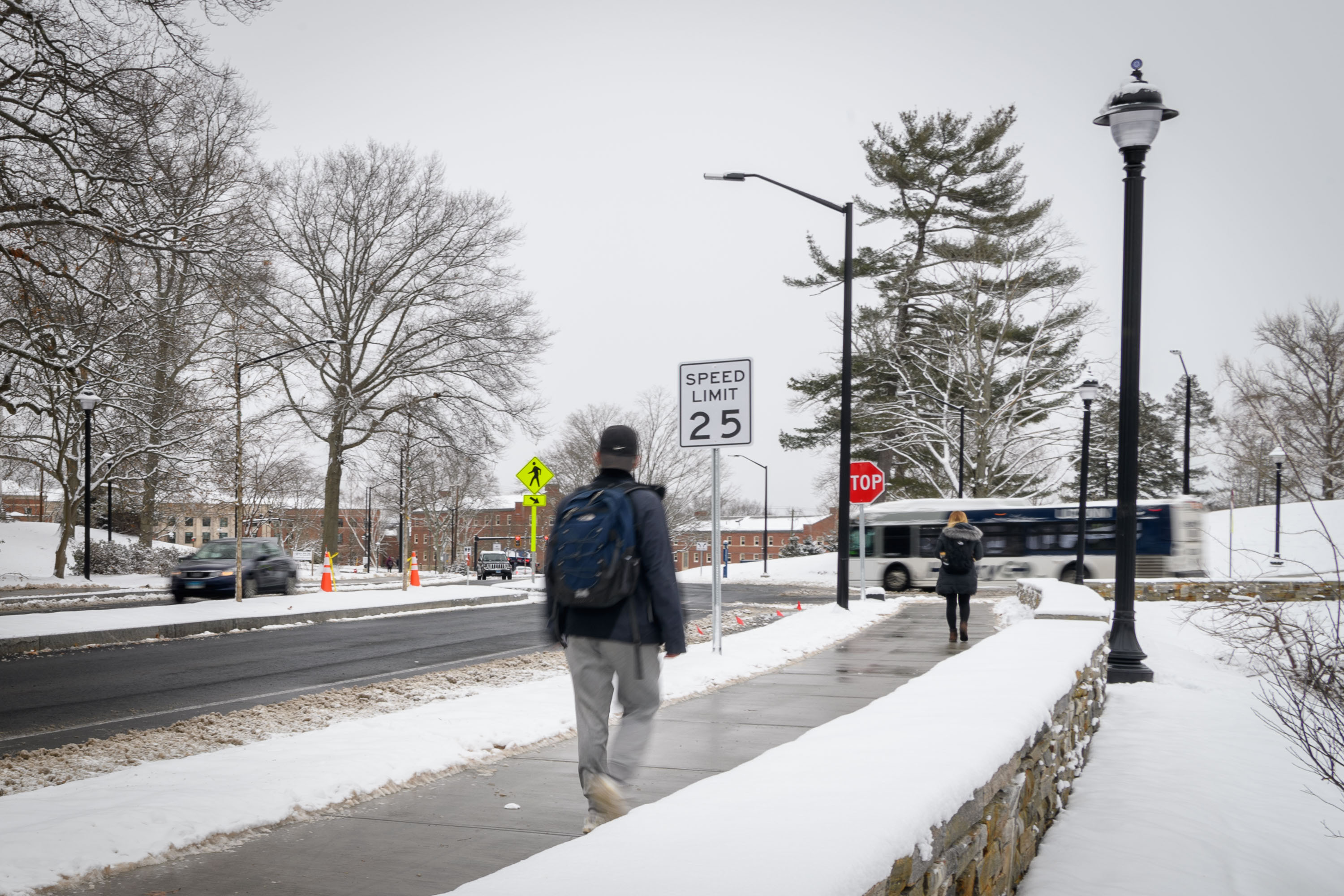As the spring 2018 semester gets underway, drivers on North Eagleville Road can breathe a temporary sigh of relief.
Two-way traffic has started again on the road, while upgrades to the underground utility network have been placed on hiatus for the semester. Work to finalize the infrastructure improvements will resume this summer.

In the meantime, the community can experience the benefits of surface improvements to North Eagleville Road, an example of the “Complete Streets” initiative on campus, which includes such projects as the recent improvements to Hillside Road and the construction of Discovery Drive.
Complete Streets include environmentally friendly features, improved universal access, and increased pedestrian and vehicular safety attributes.
A Complete Street … [is] designed to balance safety and convenience for everyone using the road, regardless of age, ability, or mode of transportation. — National Complete Streets Coalition
According to Smart Growth America and the National Complete Streets Coalition: “There is no singular design prescription for Complete Streets; each one is unique and responds to its community context. A complete street may include: sidewalks, bike lanes (or wide paved shoulders), special bus lanes, comfortable and accessible public transportation stops, frequent and safe crossing opportunities, median islands, accessible pedestrian signals, curb extensions, narrower travel lanes, roundabouts, and more.
“A Complete Street in a rural area will look quite different from a Complete Street in a highly urban area, but both are designed to balance safety and convenience for everyone using the road, regardless of age, ability, or mode of transportation.”
Complete Streets at UConn are designed and operated to enable safe access for all modes of transportation, including pedestrians and bicyclists common to all college campuses. Also taken into consideration is the movement of larger vehicles important to daily campus life, such as service trucks, vans, buses, shuttles, and emergency vehicles.

“Improving campus safety, access, and appearance while promoting sustainable, universal design is the guiding framework for all our landscape architectural work at UConn,” says Sean Vasington, associate director of university planning, design, and construction, and university landscape architect. “The underlying principles and concepts that define a Complete Street fit nicely into that structure.”
Vasington says there are many considerations when applying those principles to an existing street such as North Eagleville Road. Its reconstruction will include many features common to Complete Streets, including best storm water management practices such as converting existing impermeable surfaces to allow for drainage. Often a Complete Street will also include green infrastructure components to improve storm water quality and reduce the quantity of runoff.
Other important “green” characteristics being added to North Eagleville Road include energy-efficient lighting that does not create light pollution and renders the landscape more accurately to the human eye to promote safety, and the use of repurposed, native, or locally sourced materials such as stone and plants to enhance the way people experience and understand the campus environment.



